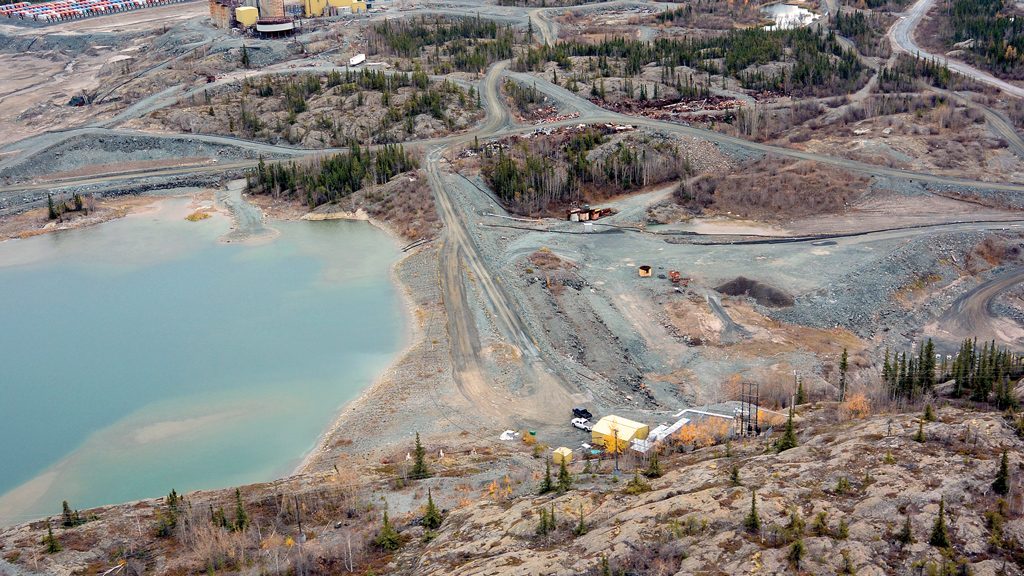To many Canadians, the Giant gold mine in Yellowknife, Northwest Territories represents scandal and mass murder, stemming from the 1992 deaths of nine replacement mine workers in an explosion of a bomb set by disgruntled striking miner Roger Warren.
But for federal government project managers and construction remediation specialists, the $900-million Giant Mine Remediation Project is a job of tremendous scope and complexity, with five distinct components, a 13-year consultation process already logged and a project construction and monitoring timeline that will last a full century into the future.
And now the project has a construction manager. In February, Parsons was selected by the federal government to provide construction management services over two phases, responsible for site care, maintenance and emerging risks and then managing planning efforts over the next two years as the actual remediation process gets underway in 2020.
Natalie Plato, Yellowknife-based deputy director of the remediation project for Indigenous and Northern Affairs Canada, provides key government oversight on an ambitious plan that aims to contain or minimize the effects of arsenic trioxide contamination and return much of an 870-hectare site to its original state.
“It’s an incredibly interesting and challenging project to work on,” said Plato.
Gold production at the Giant Mine ceased in 1999 and with the final operator Royal Oak Mines in receivership, responsibility for clean-up was assumed by the federal government in 2005.
A preliminary remediation plan was developed that recommended the “leave-in” option — storing the contaminants in the mine, rather than undertaking an unsafe off-site transfer operation.

The plan proposed using cryo-technology to freeze and secure 237,000 tonnes of arsenic trioxide within 15 underground mine chambers.
Metal thermosiphons would be used to remove the heat from the ground and exchange it into the air using pressurized carbon dioxide, ensuring contaminants are not dispersed by groundwater or flooding of nearby Baker Creek.
One successful optimization test was undertaken and further installations will take place once full remediation begins, Plato said.
The Mackenzie Valley Review Board delivered its environment assessment report in 2014, issuing 26 requirements including creating an independent oversight board.
“For the past 24 to 36 months we have been working hard with stakeholders, the North Slave Metis Alliance, the Dene, the GNWT (Government of Northwest Territories), the City of Yellowknife, Alternatives North, we did extensive consultation to develop the remediation plan,” said Plato.
The owner has also been collaborating with the local Metis and Dene communities to develop job training plans gearing up to the start of remediation, Plato said.
Besides Parsons, other consultants who have done work so far include Golder, responsible for underground engineering, and Aecom, the general civil engineer.
The project calls for demolition of some 100 onsite buildings — or rather, deconstruction.
“We don’t generally call it building demolition, we call it deconstruction because we take it down piece by piece,” said Plato. “That is the nature of safe handling practices. We don’t want dust, so they are taking them down very carefully.”
Some buildings contain asbestos, so an abatement contractor will remove those materials, double-bag them and store them in a cell, Plato said, which is standard practice.

Other hazardous materials, such as mercury and fuels, will be shipped off site, likely to Alberta. The remaining non-hazardous waste will be buried in an onsite landfill.
Other surface remediation tasks include covering four tailings ponds, fencing off eight open pits and removing contaminated soil, to two different standards.
“Most of the soil will be remediated to GNWT industrial guidelines for arsenic, so it meets industrial criteria, and the old townsite will be remediated to residential criteria,” Plato explained.
Site water will be processed at a new water treatment plant, with the target of ensuring the water is drinkable — no more than 10 parts of arsenic per million.
More problematic will be remediating Baker Creek, which runs through the site. It might never be rendered contaminant free, said Plato. The sediment will be dredged but it has become apparent there will be upstream loading of contaminants in the future.
The project team will monitor that process as well as look for ways to reduce the incoming loading, either through wetlands or another treatment system, she said.
Another concern is protecting against the collapse of the mine’s maze of underground chambers. Teams will backfill voids using a paste of tailings combined with cement.
“Only caverns near the surface pose a risk of subsidence to the ground, or the arsenic chambers, where we don’t want movement,” Plato explained. “But the underground chambers go quite deep, over 2,000 feet, so we are not going to fill all of them.”











Recent Comments